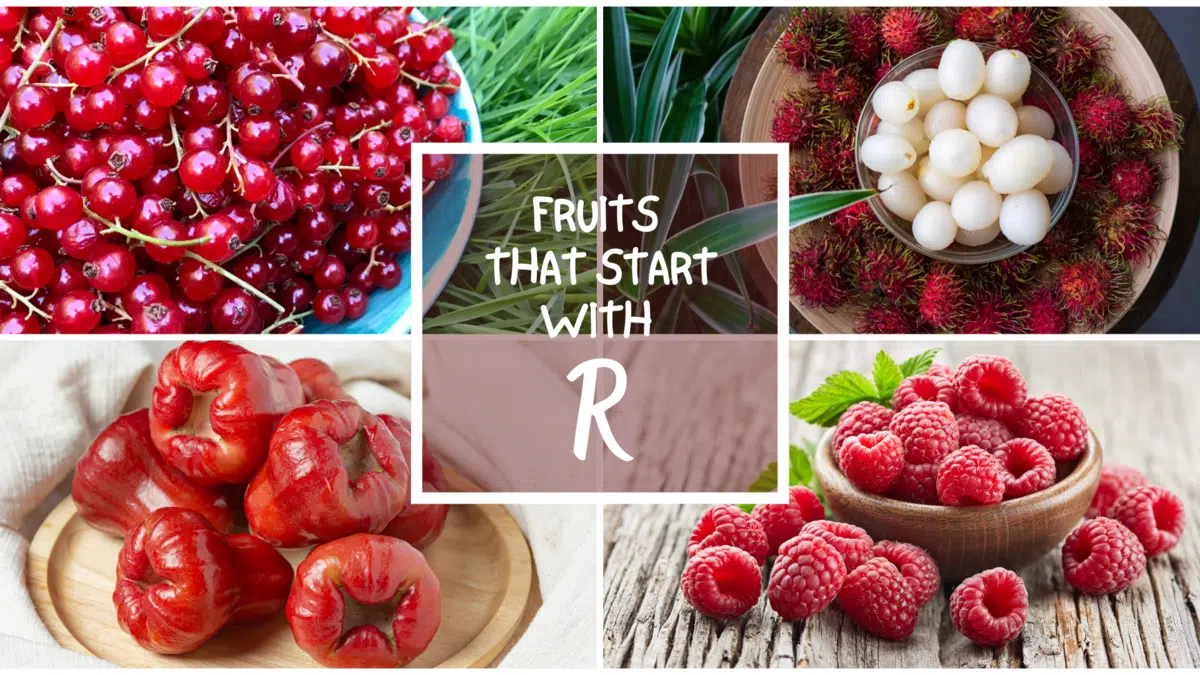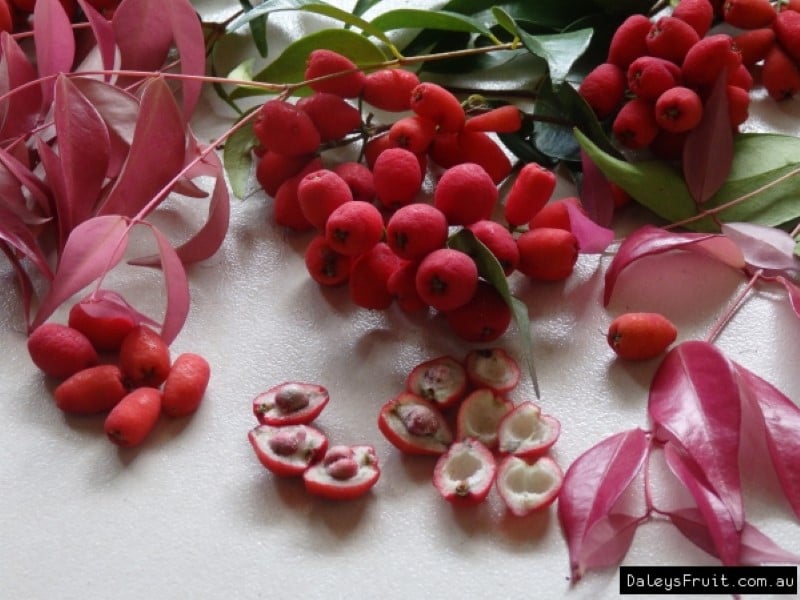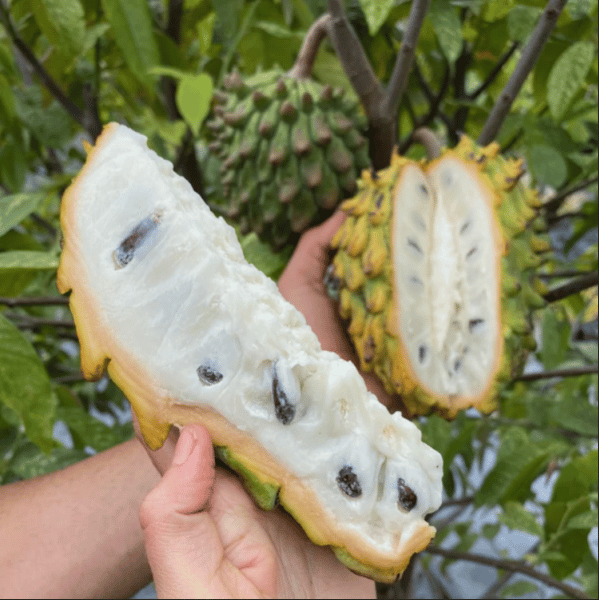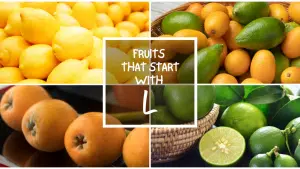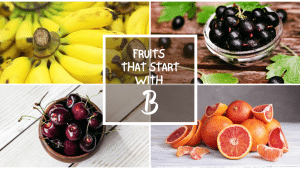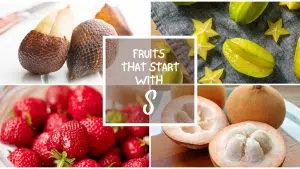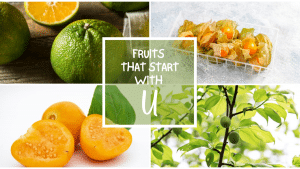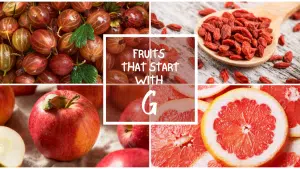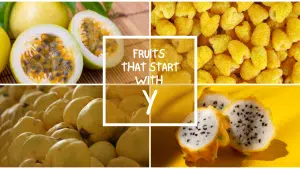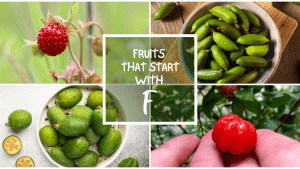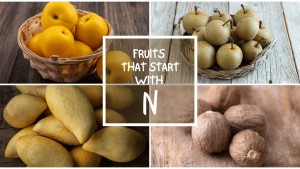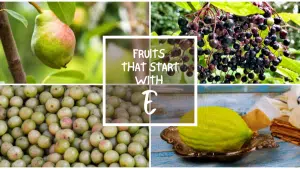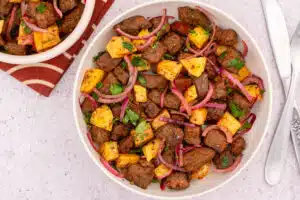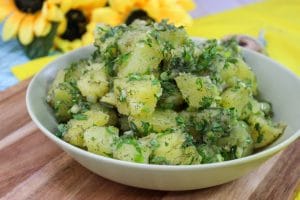All The Fruits That Start With R
Important Note: When you buy through our links, we may earn a commission. As an Amazon Associate we earn from qualifying purchases. Content, pricing, offers and availability are subject to change at any time - more info.
Fruits are an essential component in ensuring we live healthy lives. However, the list of fruits with nutritional value is very long. You have probably not had an opportunity to taste even half of these fruits. Having a rich knowledge of various fruits and their nutritional value is very important both to your health and those around you.
How about you challenge yourself to start an incredible journey of exploring this fantastic fruit world. To help guide you through this incredible thousand-mile journey, here is a list of all fruits that start with R to help you make that first step.
- Raspberry
- Red Mombin
- Riberry
- Rollinia
- Rose Apple
- Rambutan
- Rangpur
- Rosehips
- Red Huckleberry
- Red Mulberry
- Redcurrant
- Rockmelon
- Red Banana
- The Final Letter
Raspberry

The scientific name for the raspberry fruit is Rubus idaeus. Raspberries are native fruits of eastern Asia but are commercially grown in parts of northern Europe, Canada, and the United States. The raspberry fruits belong to the berry family and are very delicate fruits to handle.
Raspberry fruits are small, oval-shaped, and vary in their skin color, from red, black, or purple. The raspberry fruit is a combination of many tiny juicy drupelets fused by a web of microscopic hairs. These berries are very seedy because each drupelet contains several seeds inside. The raspberry fruit has a juicy, sweet, tart flavor with a soft texture.
Raspberry fruits can be blended to make smoothies due to their sweet taste. You can also chew the berries fresh or use them in salads. The raspberries are also often cooked to make source which can be served alongside meals such as cereals and oats or used as dressing on top of cakes.
Raspberries are a rich source of vitamin C, which protects against cardiovascular disease, boosts the immune system, and reduces skin wrinkling. Raspberries also contain traces of folic acid, which helps the body produce new healthy cells, especially useful in expectant mothers. These berries are also rich in fibers, which are essential in reducing the risk of type 2 diabetes.
Red Mombin

Spondias purpurea is the scientific name of red mombin. The other commonly known name of the red mombin fruit is Spanish plum. These fruits are native to south and Central America, Mexico, and are also found growing in the Caribbean islands. However, it is not easy to find these fruits in the United States.
Red mombin are small round fruits with edible skin which vary in color from red, yellow to orange. Unripe red mombin fruits will have a distinctive green color. When the red mombin fruits ripen, they have a sweet, juicy, and creamy flesh and taste like mangoes with some bit of the sourness of an orange. Their taste is likened to that of cashew and the ambarella fruits.
Red mombin fruits are eaten raw and fresh for their sweetness. The fruits can also be cooked to make a jelly that is added to other drinks as a flavor. You can also choose to cook the unripe red mombin fruits to make a source which is served alongside various meals.
Red mombin fruits are rich in dietary fiber/roughages, which helps maintain a healthy digestive system. Red mombins contain traces of iron minerals, which are critical in preventing blood conditions like anemia. These fruits also give health benefits of Vitamin c, which is responsible for maintaining healthy bones and helping the body fight infections and diseases.
Riberry
The scientific name for riberry fruit is Syzygium luehmannii, commonly known as Small Leaved Lilli Pilli. The riberry fruit tree tolerates low temperatures and grows naturally in the subtropical and tropical rainforests and some parts of Australia. Some people use the riberry fruit tree as a hedge plant.
The riberry is a small fruit that takes the shape of a pear. Depending on the plant variant, these berries can have one, multiple, or no seeds. Riberry fruit has red or pink skin that encloses white flesh. The flesh has a spicy, tart, and refreshing flavor with a taste of cinnamon and cloves.
The riberry fruit is used to make jams and sources served with meat like pork. You can also use the berry fruit in salads and desserts like cakes and yogurt. The riberry fruit can be blended to make juice or syrup that is either enjoyed alone or added to other soft drinks because of its cinnamon-like flavor.
The raspberry fruit is rich in anthocyanins, which prevent inflammation and lower the risk of developing cancer. Raspberries are beneficial in producing and maintaining new cells due to the presence of folic acid. You wouldn’t want to miss out on their rich calcium mineral, which can help you build and maintain strong bones and muscles.
Rollinia
The scientific name of rollinia fruit is Annona mucosa. The fruit rollinia thrives well in warm tropical climates like India but grows mostly in the Amazon, South America, and Brazil. The rollinia fruits degenerate quickly after picking, preventing them from being exported to far regions of the world.
The rolllinia fruits belong to the family of custard apples. These fruits vary in size and change from a green color to yellowish when ripe. The skin of the rollinia fruits is covered with soft medium-sized spikes that don’t prick. Rollinia fruit has a pulp that is white to cream with a snotty-jelly-like texture. These fruits are sweet with tropical tastes and a distinctively lemon flavor.
The rollinia fruit is consumed fresh solo or in combination with other fruits. Due to the jelly-like texture of rollinia, these fruits can be blended to make juice or ice cream. The rollinia fruits can also be fermented and used to make wine.
Rollinia fruits are high in calcium and phosphorus, which work together to help you build strong bones and muscle tissue. Rollinia fruits contain Vitamin C, which is essential in the growth, development and repair of body tissues. The iron traces in the rollinia fruit help maintain the body’s vital functions like boosting energy and the immune system, regulating body temperature, and maintaining good healthy blood cells.
Rose Apple

The scientific name of the rose apple is Syzygium jambos. The rose apple fruit is native to Southeast Asia and is widely grown in the pacific islands and India. These fruits thrive in sub-tropical to tropical climates. However, the fruits are readily available in the United States. Rose apples are drupe fruits closely related to the water apple.
The rose apples are small fruits with a strong rose fragrant smell. The fruits are near round to slightly the shape of a pear. Ripe rose apple fruits have a loose seed that rattles inside when the fruit is shaken. This drupe fruit has a hollow cavity inside, which contains 1-4 seeds. Rose apples have dry to juicy flesh that smells like a rose.
Despite the rose apple fruits being eaten raw, you can also stew them and mix them with sugar and serve as dessert. The rose apple fruits can be cooked to make a syrup or added as a flavor in cold drinks. You can choose to smash the rose apple fruits to make jelly or jam to smear on bread or sandwiches.
The rose apple fruits contain jambosine, which lowers your chances of diabetes. This is an organic compound that regulates the conversion of starch to sugar, reducing the chances of sudden sugar level spikes in the body. The rose apple fruits also contain Vitamin C, which protects against microbial infections by boosting the body’s immune. These fruits are rich in fiber content, making you eat less hence good for weight loss.
Rambutan

Rambutan is a fruit closely related to the lychee and is given the scientific name naphelium lappaceum. These fruit traces its origin from Malaysia in the Indonesian region. The rambutan is also commonly found in Southeast Asia, Australia, and Hawaii. These fruits are also easily found in the United States.
The rambutan fruit is similar in size to the cherry and contains a pit. The skin of the rambutan fruit is soft, easy to open, and with some fuzzy spines that do not prick. These fruits have a sweet flavor and taste like grapes. The rambutan fruits pulp is soft, juicy, and creamy with some hint of tartness.
The rambutan is eaten fresh or added to fruit salads. These drupe fruits can also be blended to make a very nutritious and refreshing juice. The rambutan fruits are also good ingredients used in making cakes or added to ice cream and smoothies.
Rambutan fruits contain antioxidants which reduce the cellular damage from free radicals, thus lowering your risk of cancer. The rambutan is home to potassium minerals that boost muscle contractions and kidney functions aside from maintaining healthy heartbeats. Vitamin C in the rambutan fruits helps the sick speedy recovery by boosting their immune.
Despite the rambutan fruit’s good nutritional values, remember not to eat the skin and seeds raw or in large quantities. This is because they contain some traces of toxic substances when digested. You can, however, touch the skin and seeds and not get harmed.
Rangpur

The scientific name of rangpur is Citrus × limonia. This is because the fruit is a hybrid of the mandarin orange and the lemon. Rangpur is a wild citrus fruit native to Northwest India. These fruits are currently spread throughout Southeast Asia and some parts of the United States.
The rangpur fruits have a tender, juicy, and strongly acidic pulp. These fruits have a globular- oblate shape with orange skin and contain very small numerous seeds. The pulp of the rangpur fruit is divided into 8-10 segments by a thin white membrane with a hollow at the center of the fruit. These fruits have an aromatic acidic taste with a smoky and musky flavor.
Rangpur is a fruit rich in Vitamin C, which is essential that help control your blood pressure and reduce the risk of chronic diseases. The rangpur fruits have traces of calcium which help build and maintain strong bones and proper functioning of the nerves. The potassium mineral found in rangpur fruits aids the body in the synthesis of proteins and metabolizing carbohydrates.
Rangpur berries are juiced as toppings on top of meals like meat. The tartness of the fruit makes it a good substitute for commercial lime.
Rosehips
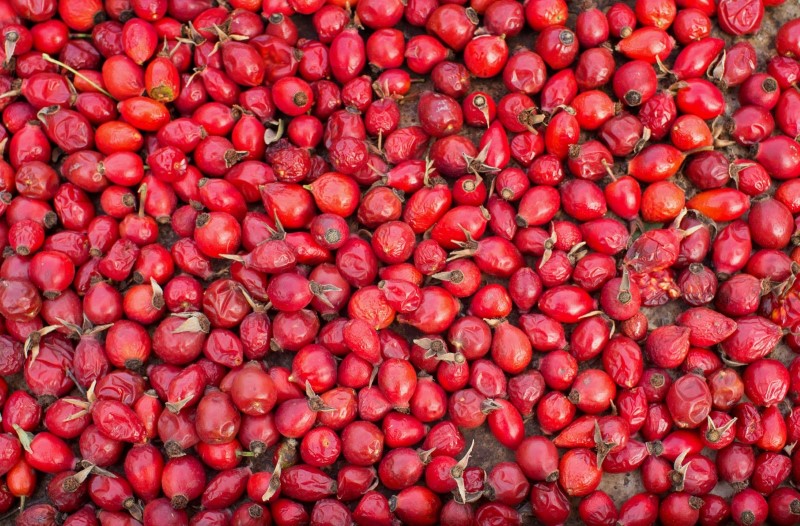
The scientific name for rosehips is rosa canina L. These are fruits of the wild-growing heirloom roses. These fruits are found in Western Asia and on the Western Coast of the US, North West Africa, and Europe.
The rosehip berries are small and round, with a big seed that occupies much of the fruit. The seed is hard with stingy hairs and is not edible. The rosehips have a pulp with a dry, soft texture and contain less water content. However, the fruit is of a sweet and acidic flavor.
Rose hips are often eaten raw. You can also use the berries to make jellies, sources, and soups used in the seasoning of dishes. Commonly, rosehip fruits are used to make a tea of high nutrition value. However, to benefit more from the rich Vitamin C from these fruits, it’s best to consume them fresh and avoid boiling the berries.
Rosehips are high in Vitamin C content compared to other fruits. This Vitamin C is essential in boosting iron absorption in the body as it gives you a strong long-term immune. Rosehips also contain lycopene and anthocyanins, antioxidants that prevent inflammation and inhibit cell degeneration from free radicals. Potassium contained in these rosehip fruits is critical in boosting the body’s metabolism.
Red Huckleberry

The scientific name of the red huckleberry is Vaccinium parvifolium. These fruits are native to western North America, commonly found to grow wildly in the forests. The red huckleberries are small red berries that resemble the blueberries. These fruits are delicate and have translucent skin with a white ring at the bottom. The berries have a tart flavor and very tiny seeds.
The red huckleberries are eaten raw or combined with other sweet fruits because of their sourness. These berries can be added to smoothies and yogurt. In other regions, the red huckleberries are dried and used in the baking of cakes. You can also smash them to make jam and pies or blend them to make juice.
Red huckleberries are high in antioxidants, which reduce the chances of suffering from diabetes, heart disease, and cancer. The red huckleberries also contain potassium which helps in balancing the water content within tissues and muscles. The Vitamin C present in these berries provides the skin with anti-aging properties and helps boost the body’s ability to fight infections.
Red Mulberry
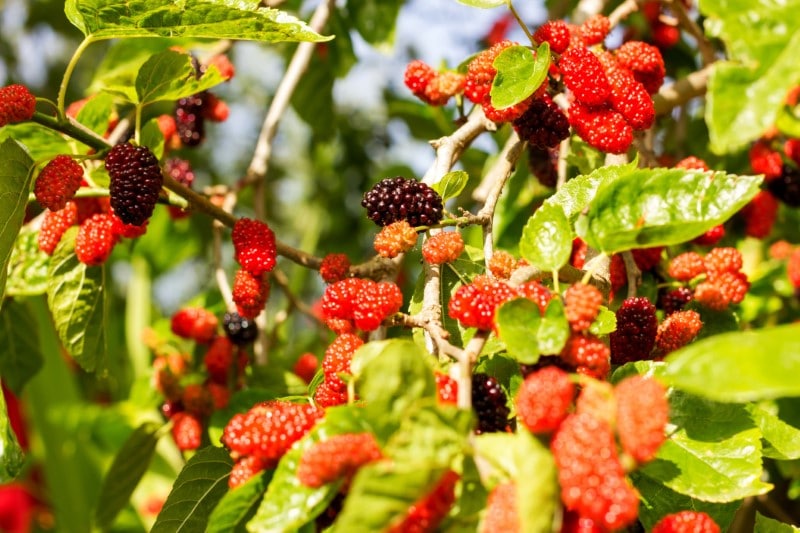
The scientific name of red mulberry fruit is Morus rubra. The mulberry is formed with many tinny drupelets joined together to form a fruit. These berries are native to Eastern, Central, and Northern America. They can also be found in Africa and Asia.
The red mulberry belongs to the berry family and is given its name because of the staining red pigment contained on its skin. These berries are similar to the elongated blackberry in appearance. The mulberries have a sweet-tart flavor and slightly taste like woody cedar.
The mulberry fruits are eaten fresh for their refreshing taste. You can add these berries to desserts like ice cream and yogurt. The mulberries are often blended to make juice and jam. These berries can be cooked to make source or syrup, which is used to serve along with snacks.
The mulberries contain flavonoids, which help maintain the good health of brain cells and maintain healthy eyes. These berries have traces of Vitamin C which is important in maintaining the structure of your bones, tendons, and skin health. Phenolic acids in the mulberries help manage diabetes conditions and prevent the development of cancer cells in the body.
Redcurrant
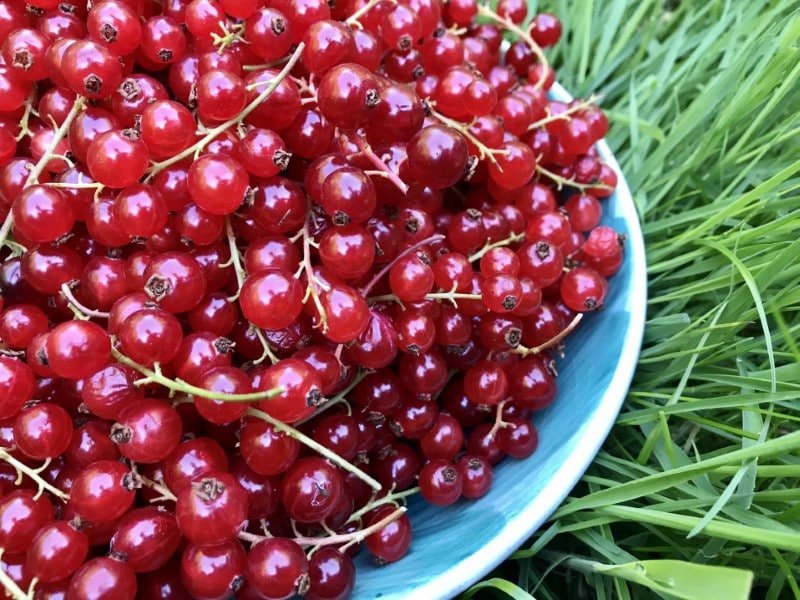
The scientific name of redcurrant fruit is Ribes rubrum. These berry fruits are native to North America but grow in the United States. The red mulberries are small and mostly found growing in clusters together.
These red currant fruits have a translucent sheen with pulpy flesh and edible seeds. These berries have a flavor compared to raspberries with some hint of rose and a moderate acidic touch.
The red currant fruits have a tart flavor making them perfect ingredients for making jelly and jams. These berries also find use as ingredients in the baking of cakes. The recurrent fruits can be cooked to make source which can be served alongside game meat. These tasty fruits can also be blended into juice combined with other fresh juice to make cocktails.
The redcurrant fruit is rich in Vitamin C, which is essential in boosting your immune and preventing you from infections and diseases. The redcurrant fruits are rich in Vitamin K, which helps build strong bones and make a blood protein responsible for clotting blood when skin is cut. The redcurrant fruit also contains potassium which helps in the metabolism of carbohydrates and ensures healthy nerves.
Rockmelon
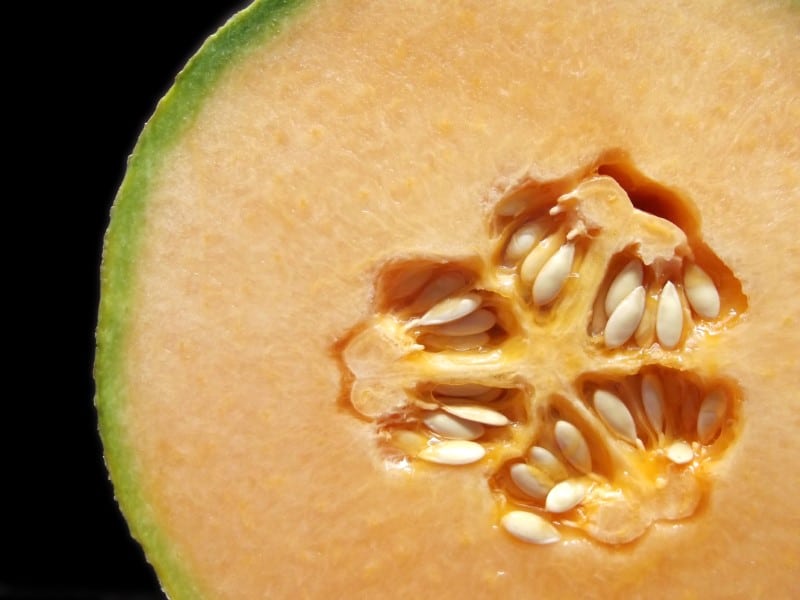
The scientific name of rockmelon is Cucumis melo var. These fruits are native to Central Asia and mostly grow in warm regions like Africa, Middle East Asia, India, and Iran. The fruits are spherical and are very hard.
The Rockmelons have a rough, hard, and net-like skin. The pulp of the rockmelon is creamy, fleshy, and with a mild sweet taste. The rockmelons are largely constituted of water, making them delicious and refreshing fruits.
The rockmelons are eaten raw or sliced and mixed with other fruits to make salads. These fruits can also be smashed to make smoothies and creams used in desserts.
Rockmelons are rich in Vitamin A, which helps lower acne levels and protect your eyesight from age degeneration and night blindness. The rockmelon contains vitamin K, which is beneficial in providing wound healing properties to the blood. This fruit contains a lot of water which, despite the refreshing ability, helps maintain blood pressure, regulate body temperature, and aid indigestion.
Red Banana
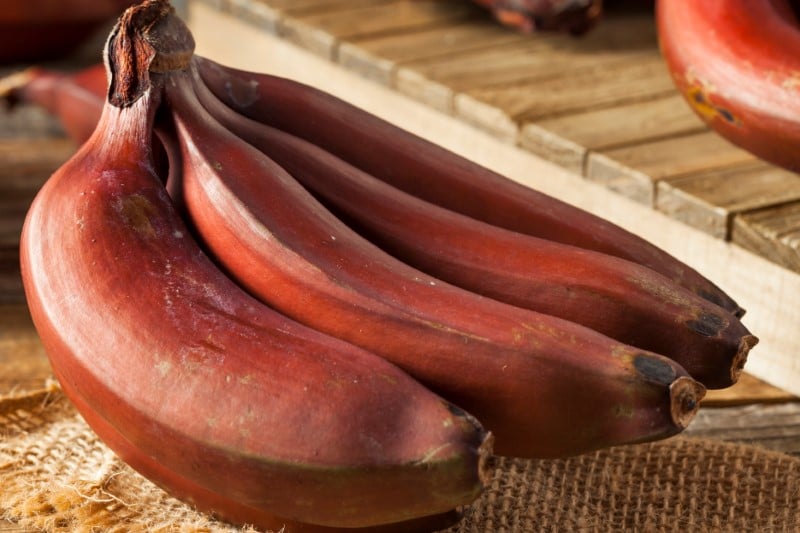
The scientific name for red banana fruit is Musa acuminate. These fruits are smaller in length compared to the yellow bananas. The red banana fruit is native to the Malaysian region and grows in the wild. These fruits are also common in West Africa and South America. The red banana fruits are found in the markets in the United States.
Red banana fruits undergo color changes from green to red-orange when ripe. To quickly identify a ripe red banana, look for black spots on the skin of the fruit. The peel of the banana fruit is thick, smooth, and a bit tough. The flesh of the ripe red banana is creamy, dense, soft, and tender. These fruits have a sweet, mild, earthly flavor and a tropical taste like mangoes.
The red banana is eaten raw or sliced and mixed with other fruits to make fruit salads. The fruit’s dense nature makes it a perfect recipe for making smoothies that can be smeared into peanut butter. Red bananas can also be used in baking cakes and pies. These fantastic fruits can also be baked into bread.
The red bananas are rich in fibers, which help digestion and promote smooth bowel movements. These fruits have traces of vitamin c, which is essential in boosting the immune of the body preventing diseases and infections. Vitamin A contained in the red banana fruits help with improving vision of the eye and also contributes to healthy skin.
The Final Letter
The nutritional benefits you can get from fruits are unmatched. The next time you go fruit shopping, remember to check out and try having a taste of some of these fruits that start with R. Your fruit-hunting journey will undoubtedly never be the same again.
